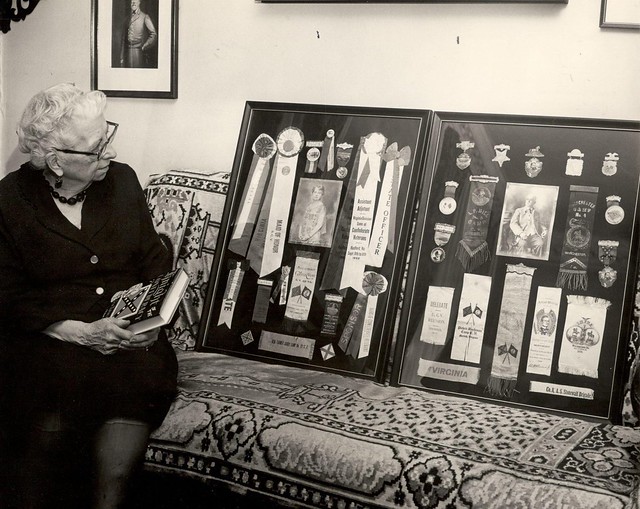This week at the office, we’ve been working on filing newspaper clippings relating primarily to PHW’s Annual Meetings and Preservation Awards. While working on these files, we noticed a good number of gaps in the 1960-1980 range of Annual Meetings. If you happen to come across any invitations, newspaper clippings, notices for election of board members, or similar bits, please feel free to drop them off at the PHW office. Likewise, if you or a building you know of received an award from PHW and you don’t see it on our past award page, please let us know which award category, who/where the project was, and what year so we can correct our listings.
We are also extra thankful for a donor who dropped off a large quantity of paper shopping bags for our Bough and Dough Shop this week. We have temporarily taken in the drop-off bin while we sort through and see if there are some gaps in our needs left. We’ll update our needs soon, but from the looks of it, we will probably be looking for smaller gift bag types specifically next week.
As a belated nod to Labor Day, below we have reprinted and lightly edited for clarity selections from Danny Fisseha’s paper “The Kurtz Building – In Connection with the Business of the Community” from the oral history project of the Kurtz Building, 1988, for your reading pleasure this week.
Captain George W. Kurtz – soldier, cabinet maker and the oldest and best known funeral director in Virginia at the time of his death, died on November 14, 1926 at the age of eighty-nine. As a young man he learned how to make cabinets. He then worked with Stephen Stackhouse making furniture and coffins, which led him to his lifelong business.
In 1868, after serving in the Continental Morgan Guards and the 5th Virginia Infantry Stonewall Brigade[1], Capt. Kurtz established a furniture business in Winchester, Virginia. In 1876 or 1877[2] he bought the warehouse at Cameron and Boscawen Streets. Here, with the help of the railroad track coming straight to Winchester, he established his business of undertaking in the northwestern part of the state. He made most of his furniture himself and his clientele was mostly upper and middle class. On the other side of his furniture business, he also had a cabinet making business employing five other workers. He was appointed to the first Virginia State Board of Embalmers and served for a quarter of a century by a successive appointments starting June 1894 through 1922.
Despite the initial success of the business, it began to experience a decline by the end of his life. The loss of the rail system directly serving the building and competition from other funeral providers exerted the initial pressure. The biggest blow came after his death. It was uncovered that Kurtz never paid any income tax from 1868 to 1926. The federal government sent a bookkeeper at the expense of the Kurtz family to transcribe the records from the start of the business; consequently this cost them a great deal of money as back taxes were assessed and paid. The business was kept running by his daughter, Miss Lucy, and other close relatives until the 1960s to reach its 100th anniversary. Shortly after, the competition and loss of profit forced the business to shut down and the Kurtz Building was sold.

